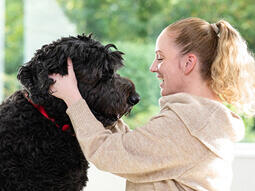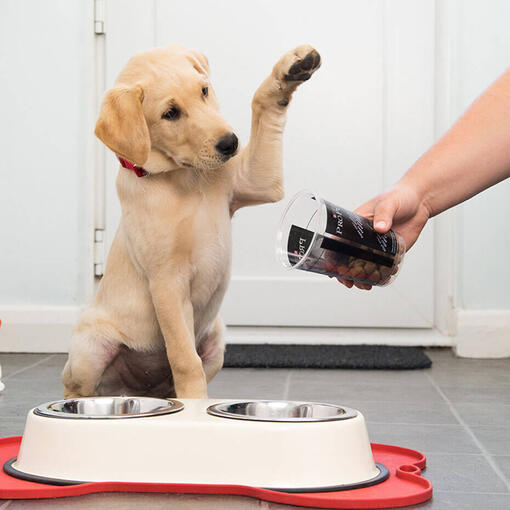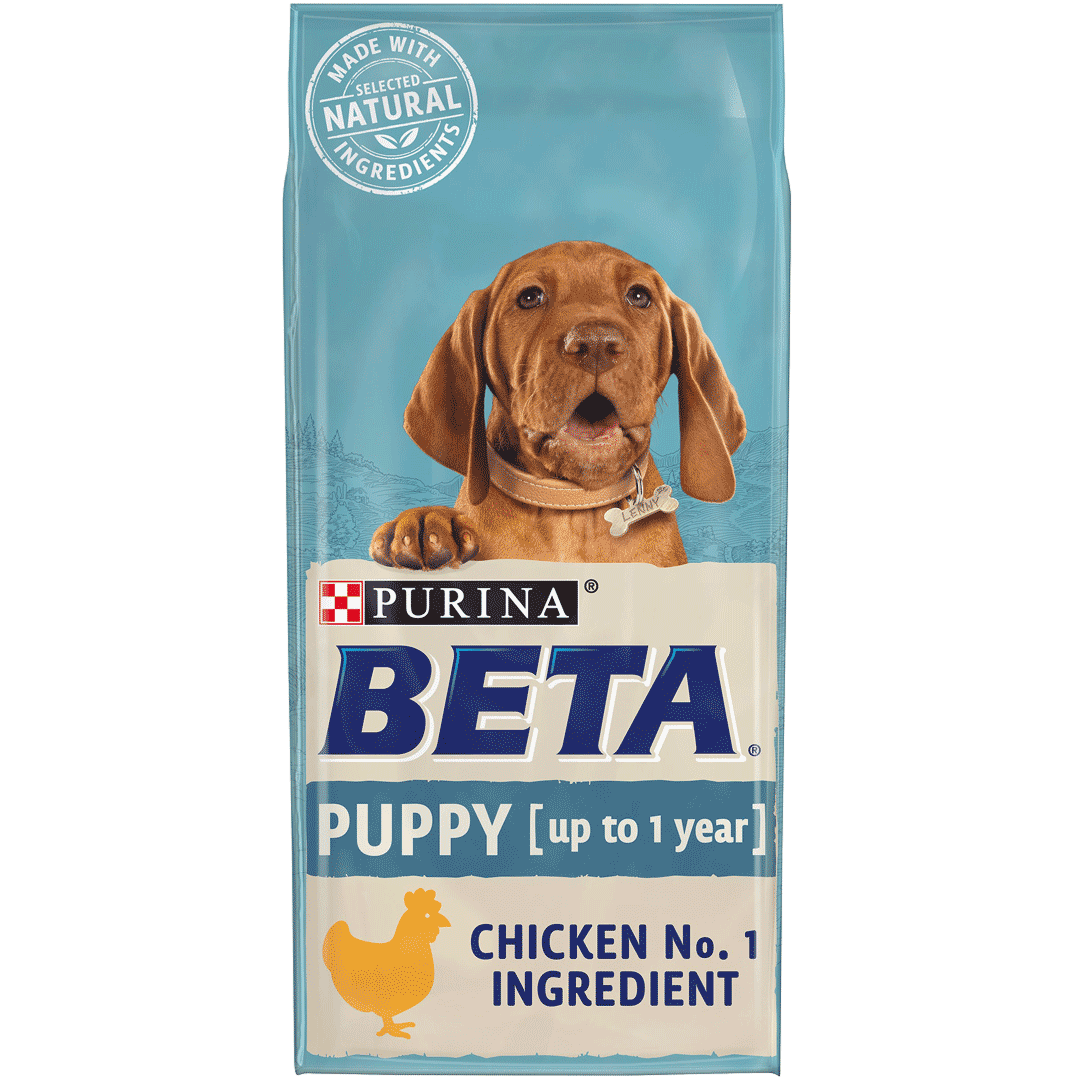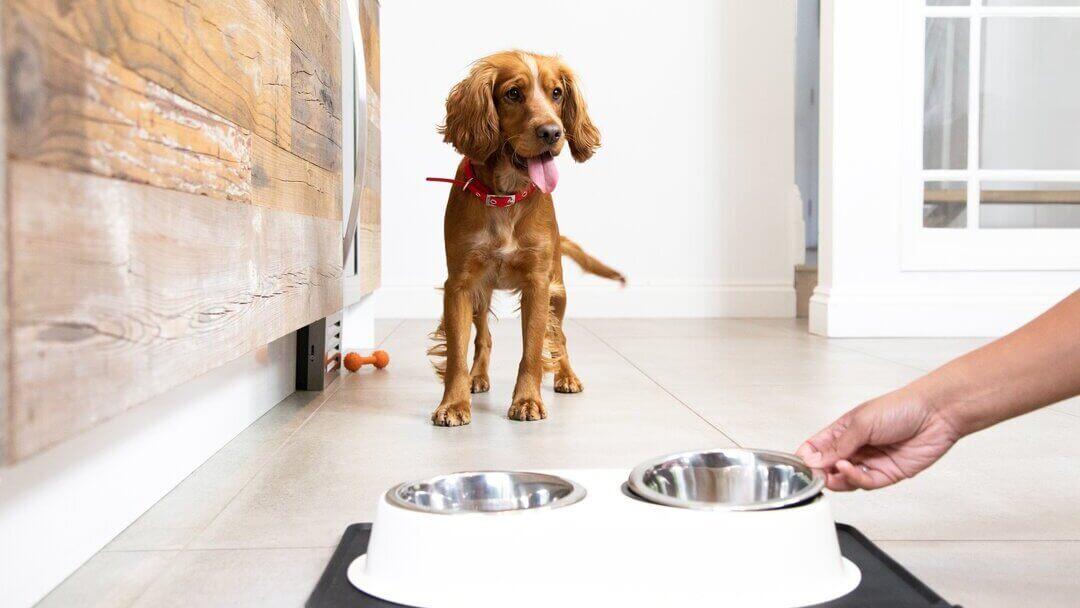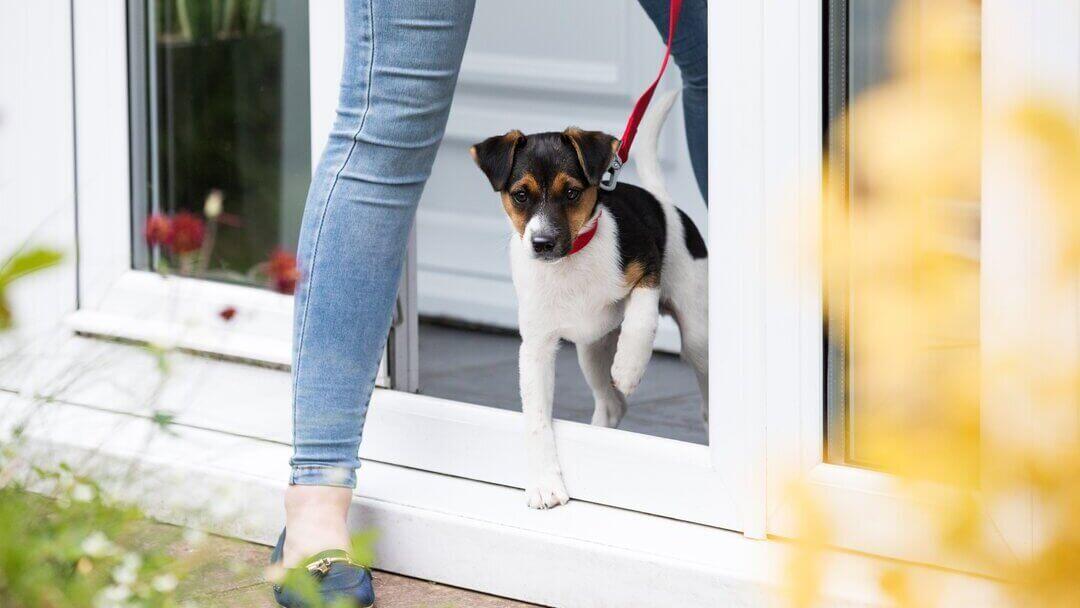

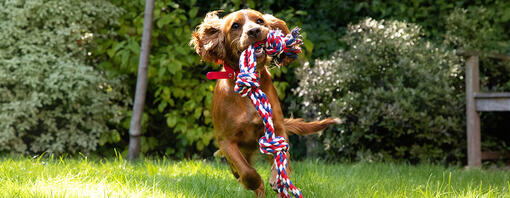
Most breeders will ask that you wait until your new puppy is eight weeks old– or maybe even older in some breeds - before they’ll let you pick them up – which might feel like an eternity! This is a great opportunity to start dog proofing your home and preparing for your new arrival, so that when you bring your puppy (or new dog home, if you are adopting) your house and garden will be a safe and welcoming environment.
Outdoor safety
There’s lots to do in preparing for a new puppy and you’ll need plenty of time in advance to get your home and garden ready for your new arrival. Even if you're bringing home an adult dog, you’ll still need to check for hazards in the home and make sure you have a dog proof house and a dog proof garden.
Puppy proofing your home
- Fit child locks on floor-level kitchen cupboards, especially if there are cleaning materials inside. Consider moving any hazardous products to high cupboards ‘ just in case’.
- Fix baby gates to the top and bottom of your stairwells to prevent puppies or elderly dogs from falling accidentally, or gaining access to parts of the house where they shouldn’t be. Baby gates can also be used in the doorways of any rooms that you might temporarily want your dog to stay out of (useful for human dinner times, if you have cats or other dogs, or if you have visitors. If you are handy at DIY (and don’t mind holes in your woodwork, these can be screwed in place, otherwise you can buy ones that fit by tension (although they aren’t quite as secure).
- An appropriately-sized play pen is a great way to have your puppy with you but it can keep them safe from potential hazards you can’t give them your full attention – or are doing something you don’t want your puppy joining in with!
- Remove or avoid household toxins including toxic plants (Philodendron, Mistletoe, Poinsettia), strong chemical cleaners, plug in air fresheners, and environmental insecticides.
- Keep doors to the oven, fridge, microwave, dishwasher, tumble-dryer and washing machine closed. Small puppies can crawl into the strangest places and often find a warm dryer irresistible, so put notes on the doors to remind people to check inside before using them.
- Dogs – and especially puppies - don’t have the same sense of height and depth as humans, so when dog proofing your house, make sure that they can’t jump out of or accidentally fall from higher storey windows.
- As your energetic puppy tears around the house, it’s all too easy for them to slip and fall, causing injuries. Slippery floors can also be a bit scary for puppies or put strain on growing bones and muscles. Identify places where they might find the flooring surface difficult to walk on – or run on - and put down some non-skid matting or carpet on any slippery or hardwood floors.
- Wood burners, candles, burning incense or oil burners are asking for trouble when around an inquisitive puppy - extinguish all naked flames or put them well out of reach, and put a guard around any fires.
- Hide all trailing electrical cables behind furniture, as these can be very tempting for your puppy to chew on. If that’s not possible, you can buy a thick cable protector to go over the cables from most hardware shops. Unplug and move any unnecessary cables from puppy reach.
- Stock up on chew toys to give your puppy something appropriate to gnaw on (which they will need as they develop) and divert them away from chair legs, toys, shoes, mobile phones or electrical items.
- Remove temptation. Tidy up and make sure everyone in the family knows not to leave things lying around. Puppies don’t know what is valuable or important – and all natural puppy exploration happens by first putting things in their mouth!
- Once your dog’s home, keep the toilet lid closed (and don’t use those cleaning products that clean every flush) - some dogs just can’t resist drinking from the bowl!
- Don’t leave food unattended on your kitchen work surface – especially if you have a tall dog – or an athletic one!. Not only is it far too tempting for a dog to resist, but also many of our foods can be toxic to dogs, such as chocolate, grapes, onions and garlic.
Puppy proofing your garden
While most of the time that your dog is in the garden, you will be with them, it still needs to be a safe place where they can run around freely with no means of escape. Therefore, it’s important to make sure you create a dog proof garden prior to bringing your puppy or dog home. A few things to think about include:
- Make sure your fence is tall enough to contain an energetic dog. Some fairly small breeds can jump (or climb) a surprisingly high fence. A six foot fence will keep in all but the most enthusiastic escapologists. If you have a Chihuahua however, this might be overkill!
- Look for gaps where your puppy could squeeze through or under, and check that fence panels are sunk well into the ground so that they can’t dig underneath it and are sturdy enough to resist against a jumping pup – especially if of a larger or more sturdy breed.
- Terriers, in particular, are notorious diggers so do regular checks around the perimeter of your gardens and make any repairs straight away.
- Some dogs can’t resist pulling up plants and flowers so, if you’re a keen gardener, you may need to fence off your prize petunias! Or else fence off an area of garden especially for your dog – with plenty of things to keep them occupied.
- Remove ladders, or anything your dog may feel the urge to step onto, and fence off swimming pools, hot tubs and ponds when not in use. Make sure swimming pools have a ramp so your puppy can climb out – just in case they fall in – and unless you can fence the pool totally with no risk of the puppy even having access, keep it uncovered (as if a dog falls in and ends up under the cover, the results can be tragic).
- Make sure you puppy has shelter from the sun and also wet/windy weather. Some dogs love being outdoors in all weathers so make sure it is safe and comfortable for them. Do make sure they can come back inside if they get too hot or too wet.
- Avoid using cocoa chips in the garden as an alternative to bark in flower beds or in their toilet area, as these are poisonous to dogs.
- Your dog-proof garden should include dog-friendly plants, and avoid some others to reduce the risk of poisoning and skin irritation. The more common plants to avoid or remove from your garden that could cause irritation or poisoning are Lily, Azalea, Daffodil, Tomato, Foxglove, Yew and Hydrangea. If your dog does eat part of a poisonous plant (or you are worried they might have done), go straight to the vet, taking the plant with you if possible.
- You should always discourage your puppy from chewing anything they find in the garden. Contact your vet if you’re concerned they’ve eaten anything they shouldn’t have. Make sure they have plenty of things of their own to chew and play with however. Leaving your puppy or dog alone in a garden with nothing to do is just asking for trouble!
- Never use slug pellets, weed killer or rat poison they’re extremely toxic. Also check any other products you might use to deter insects, clean water features etc.
- Make sure your dog can’t get into the garage, as many car products such as anti-freeze can be very harmful to them.
- If you have gates in your garden, remind everyone about the importance of closing them. You can attach self-closing devices but set them to a gentle close so there’s no danger of them snapping shut on your dog.
Protecting your dog when you're out and about
- Keep them away from moving vehicles – even your own. Even pulling out of your garage or driveway can be a hazard if your dog is out as dogs have a great knack of hiding out of view of your mirrors. Make sure your dog is inside before moving your car.
- Make sure you have attached your dog’s lead before opening any door (home or car) so that they can’t make a mad dash out into the road.
- Keeping your dog cool in the summer is very important. Never leave them in a hot car – even if you don’t think it is that warm, your dog can overheat in a few minutes.
- Carry plenty of fresh, clean water. They’ll need this when going for walks – or for breaks when you are dirinv long journeys.
- Special care needs to be taken in the winter as many gritters not only dispense salt but also anti-freeze, which will be toxic if ingested by your dog.
- Some road and pavement surfaces can cause irritation to your dog’s paws, as can grass seeds, so giving them a wipe down after each walk will help.
This may sound like a daunting list, but most of it is common sense and should soon become second nature with a bit of practice. Like bringing home a new baby, prevention will always be better than cure.
Next, discover useful advice to help you introduce puppies and children and get their relationship off to a great start.


